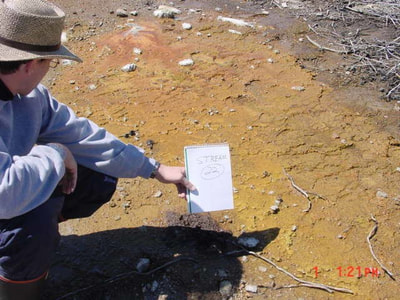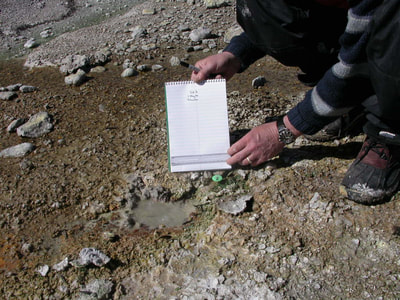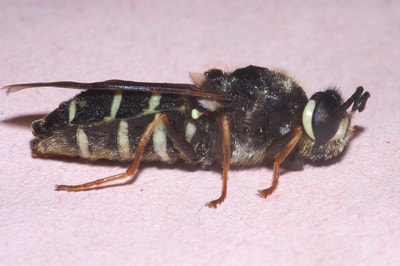|
One aspect of BSF biology that is much appreciated is the ability of the larvae to survive the presence of materials that would be toxic to you and I. This doesn't come as a surprise as the BSF can be considered an extremophile. Visit the following website for a discussion of extremophiles: oceanservice.noaa.gov/facts/extremophile.html The BSF larvae live in an environment that is full of pathogens (E. coli, Salmonella, etc), heavy metals at times, and toxins. Here is a link discussing pathogens in food. I would like you to focus on the pathogens associated with food waste- not necessarily the angle of the story. Pathogens: Some papers have found BSF larvae are capable of reducing E. coli and Salmonella in the food they are provided. This is great news as this form of remediation is critical for food and feed safety; however, you should still be careful with your product as these studies do not suggest in all situations similar results will be produced. Here are a couple of studies specifically on the reduction of bacteria in waste- in case you want to read more. Link discussing pathogens in food: www.huffingtonpost.com/kathy-freston/e-coli-salmonella-and-oth_b_415240.html Links to a few papers on pathogen reduction by BSF larvae: www.organicvaluerecovery.com/studies/studies_htm_files/E-coli_reduction.pdf link.springer.com/article/10.1007/s13593-014-0235-4 www.slu.se/globalassets/ew/org/inst/energy-technology/research/environmental-engineering/kretsloppsteknik/cecilia-l/gabler-2014-using-black-soldier-fly-for-waste-recycling-and-effective-salmonella-spp.-reduction.pdf Heavy Metal (not the music): This topic, like with pathogen work, is still on-going. Heavy metals (see link on heavy metal) such as cadmium and lead, are an issue with waste recycling with the BSF. www.thoughtco.com/definition-of-heavy-metal-605190 Generally speaking, the heavy metal ends up in one of two places (exoskeleton of the larvae) or excreted by into the waste. Both are concerns- but for different reasons. If incorporated into the insect, you have to be concerned about heavy metal accumulation (bioaccumulation could lead to higher concentrations of the substance as it moves up the chain from waste to insect). If in the waste, the concentration of the heavy metal could increase as the waste is being reduced by the BSF (less waste & same amount of heavy metal results in greater concentration). Here are a couple of papers for you on this topic. www.wageningenacademic.com/doi/abs/10.3920/JIFF2015.0030 (possible restricted access) link.springer.com/article/10.1007/s12649-011-9079-1 Toxins: This area is pretty new in terms of research. As of now, mycotoxins appear to be actually reduced in the waste. This is a huge deal!! Think about the amount of maize, peanut, and other grains contaminated with aflatoxin and what it means to human and animal health. www.fao.org/docrep/x5036e/x5036e1e.htm This study (see link below) is a good read as it explains the experiment and results in relations to aflatoxin reduction. If true, we are potentially looking at the opportunity to recycle billions of dollars worth of contaminated grains to produce high quality protein. The jury is still out- but the evidence looks great so far. www.tandfonline.com/doi/full/10.1080/19440049.2017.1299946?src=recsys As always, I hope this information is helpful. Best of luck and happy BSF farming!! As a side note, I had a chance to work with a soldier fly in Yellowstone National Park, WY, USA (see images at bottom)- just to give you an idea of an extremophile. This species lives in hot springs where the temperature reached 60C (140F), pH approaching one, and enough arsenic to choke a horse. So, the larvae have been selected to either avoid these materials are remediate them. AuthorJeff Tomberlin, PhD, in awe of BSF biology
0 Comments
Leave a Reply. |
AuthorIndividuals with over 25 years research experience with the black soldier fly. We are passionate about the science behind the black soldier fly and its ability to convert waste to protein. Get Notified Here
Archives
September 2022
Categories
All
Install an RSS app to get notified from us when a new post is up!
|
ServicesSupport |
About |




 RSS Feed
RSS Feed

